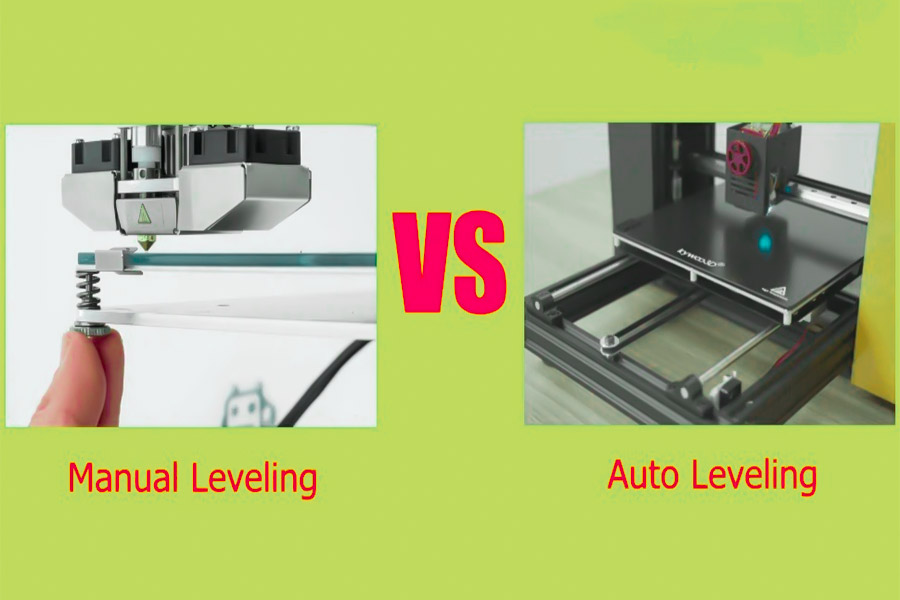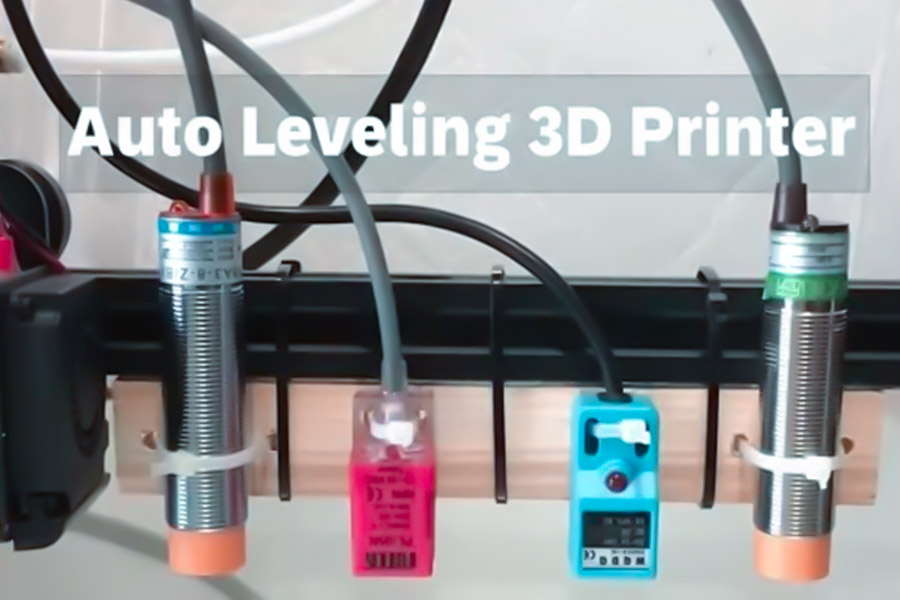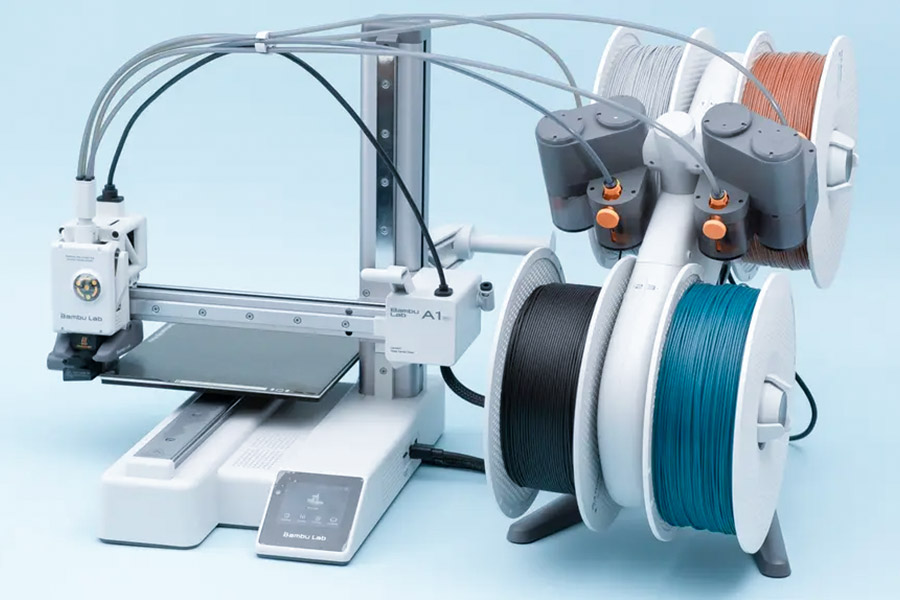3D印刷技術の迅速な開発により、自動レベリング機能は、高級モデルの高級構成から、ほとんどの消費者グレード3Dプリンターの標準関数に変更されました。ただし、多くのユーザーは、このテクノロジーの重要性を完全に理解していない場合や、「ケーキにアイシングを追加する」だけの便利な機能であると考えています。実際、印刷品質に対する自動レベリングの影響は、ほとんどの人が考えるよりもはるかに大きいです。
1。材料科学の観点からの接着制限 プラ材料のベンチマークテスト 2。エンジニアリング材料の課題 注:テスト環境温度は23±2℃で、プラットフォームの温度は材料の推奨値に従って設定されます 2。軍事グレードの過酷な環境検証 温度ショック: 実際のデータ: 3。自動レベリングの物理的制限 乗り越えられないハード制約 精度の天井 4.産業級ソリューション ドイツのリプラップソリューション 軍事事件は、センサーの精度で十分である場合、故障の主な原因がレベリングの問題から材料処理のマッチングの問題に変化したことを証明しています。これは、自動レベリングが必要な基盤であり、普遍的な解決策ではないことを思い出させます。 航空宇宙3D印刷の分野では、センサーの選択は飛行の安全性に直接関係しています。 lsは、光学センサーが主要メーカーによって放棄される技術的理由を深く分析します 自動レベルの保証は100%の最初の層の成功を保証しますか?
bltouchセンサー最適化効果:
材料タイプ
最適なzオフセット補正
接着(mpa)
自動レベリングへの依存
通常のpla
自動適応
28.7
★★★★
petg
+0.02mm
22.4
★★★
炭素繊維強化ナイロン
±0.05mmマニュアル
18.9
★★☆☆☆
peek
-0.03mmマニュアル
15.2
★☆☆☆☆
stratasys fortus 450MCケース(MIL-STD-810G標準)
振動テスト:
複合補償戦略
 なぜ航空宇宙メーカーは光学センサーを拒否するのですか?
なぜ航空宇宙メーカーは光学センサーを拒否するのですか?
1。温度感度:光学センサーのアキレスのかかと
熱誘導エラーの実際のデータ
波長ドリフト現象:
- 温度が1°C増加するごとに、レーザー波長は0.15nm(NIST認定データ)
- 80°C環境での累積誤差は12nm です
- Z軸エラーに変換:±0.025mm/10°C
熱変形の比較表
<テーブルスタイル= "境界線崩壊:崩壊;幅:100%;境界線:#000000;" border = "1"> 2。表面反射干渉:NASAの技術覚書によって明らかにされた真実
NASA TM-2023-1234:
透明なPEIボードの問題
- 反射率> 90%の場合、偽トリガー率は37% です
- ±0.02mm精度を達成するには、3つの反復測定が必要です
- 検出時間は400% 拡張されます
金属粉末干渉
- チタン合金パウダーは「偽のピーク」 を生成します
- 50μm層の厚さ検出故障率は61% です
- アルミニウムベースの材料誤差は±0.07mm です
軍事基準の下でのパフォーマンスの欠点
mil-std-3022テスト結果:
電磁互換性:
- 光学センサー30V/M RFフィールド故障率18%
- 誘導型は100V/mテストに合格しました
振動テスト:
- 光学プローブオフセット0.05mm
- ひずみゲージタイプ<0.003mm
温度ショック:
- Δt>50°C/min の場合
- 光学システムは、安定するのに5分必要
3。軍事基準の下でのパフォーマンスの欠点
MIL-STD-3022テスト結果:
電磁互換性:
- 光学センサー30V/M RFフィールド故障率18%
- 誘導型は100V/mテストに合格しました
振動テスト:
- 光学プローブオフセット0.05mm
- ひずみゲージタイプ<0.003mm
温度ショック:
- Δt>50°C/min の場合
- 光学システムは、安定するのに5分必要

自動車生産における自動レベルのROIを計算する方法
1。コア計算式とパラメーターシステム
基本的なROI式:
- ROI = [(年間返品 - 年間費用) /総投資]×100%< / li>
重要な計算寸法:
- 直接コスト削減
- 労働時間の短縮
- 消耗品の損失の減少
- スクラップレートの低下
- 隠された利点
- 機器の使用率の増加
- 品質コストの削減
- 変更時間の短縮
2。労働時間節約計算モデル(フォルクスワーゲンのケースに基づく)
フォルクスワーゲンウルフスバーグファクトリーデータ
従来のレベリング方法:
- 単一のレベリング時間:8.5分
- 毎日の平均レベリング頻度:6回
- 年間実効勤務日:240日
kuka自動レベリングシステム:
- 単一のレベリング時間:1.2分
- 年間労働時間節約:(8.5-1.2)×6×240 = 10,512分≈218時間
3。消耗品損失の計算(タングステンカーバイドプローブケース)
コストパラメーター
<テーブルスタイル= "境界線崩壊:崩壊;幅:100%;境界線:#000000;" border = "1">年間貯蓄
(36×120) - (3.6×480)=¥4,320 -¥1,728 =¥2,592/year/device
4.スクラップレートの低下の恩恵(BMWライプツィヒプラントのデータ)
溶接ステーションの比較
年次リターン
(7-0.5)×220×240 = 343,200ユーロ/生産ライン
5。投資コストの内訳
典型的な自動レベリングシステム構成
<テーブルスタイル= "境界線崩壊:崩壊;幅:98.2824%;高さ:180.859px;" border = "1">磁気プローブにはどのような隠されたコストが付いていますか?
産業テストでは、医療機器または科学的研究、磁気プローブは高感度のために広く使用されています。ただし、多くのユーザーは、隠されたコスト、特に電磁干渉(EMI)に伴う追加費用を過小評価しています。 lsは、磁気プローブを詳細に使用するための真のコストを分析して、購入する前により情報に基づいた決定を下すのに役立ちます。
1。電磁干渉(EMI)保護コスト
(1)高仕様のシールド要件
磁気プローブは、外部磁場干渉の影響を受けやすく、μメタル合金(厚さ0.3mm)で保護する必要があります。ユニットあたり800〜1,500円。
いくつかのシナリオでは、独立した接地システム(インピーダンス≤4Ω)が必要であり、建設コストは約3,500個/サイトです。
(2)フィルター回路のアップグレード
高周波ノイズを抑制するために、
一般的なモードチョーク(¥150–300/チャネル)
πフィルター(¥50–100/チャネル)
シールドケーブル(STP)を構成する必要があります。
2。長期的なメンテナンスコスト
(1)定期的な脱気治療
磁気プローブは、6か月ごとに専門的に脱気にする必要があります(磁場強度<5ガウス)。
自己購入した脱気装置:¥25,000〜80,000/set
アウトソーシングサービス:¥1,500/時間(年間3,000円)
(2)キャリブレーションとテスト
年次CNAS認定キャリブレーション:¥3,000〜5,000/probe
スペアパーツの増加インベントリ:磁気に敏感なコンポーネントの寿命が短縮されているため、スペアパーツの15%を在庫にする必要があります
3。システムの統合とスペースコスト
(1)インストール制限
生産ラインのレイアウトに影響を与える可能性のある非磁性機器から≥1.2mを維持する必要があります
植物宇宙占領の増加により、間接的に運用コストが増加します
(2)熱散逸補償
シールド層の結果、熱散逸効率が20%減少し、より強力な冷却システムと電力請求書の増加が必要です。
4。生産性の低下のコスト
(1)ダウンタイム損失
各メンテナンスは、生産ラインの出力値に基づいて計算される8〜16時間のシャットダウンにかかります:
¥5,000〜20,000/1時間の失われた容量
(2)誤診のリスク
電磁干渉は、データの異常と誤検知を引き起こす可能性があり、平均損失は時間あたり8,000円です。
5。代替ソリューションの比較
<テーブルスタイル= "境界線崩壊:崩壊;幅:100%;境界線:#000000;" border = "1">隠しコストを削減するにはどうすればよいですか?
- 実際のニーズを評価する:それが強力な磁気環境でない場合、長期的にはより経済的な光学またはワイヤレスソリューションを考慮することができます。
- 最適化されたシールド設計:干渉のリスクを軽減するために、複合シールド(μmetal銅メッシュ)が使用されます。
- プロフェッショナルサービスプロバイダーを選択します:機器の投資を減らすために脱気とキャリブレーションを外部委託します。
磁気プローブの真のコストは、標準価格よりも3〜4倍高い場合があります。購入する前に、その後の過剰支出を避けるために、ライフサイクルコスト(TCO)分析を実施することが重要です。

AI駆動のレベリングは、人間の専門知識に取って代わることができますか?
産業製造、医療診断、精密測定の分野では、「レベリング」は極端な精度を必要とする重要な技術です。人工知能(AI)レベリングテクノロジーは近年飛躍的に進歩していますが、人間の専門家の経験的判断に完全に置き換えることはできますか? LSは、3つの次元からのAIレベリングの現在の状況と将来を確認します:技術ボトルネック、業界の仕様、アプリケーションシナリオ。
1。テクノロジーの比較:AIレベリングvsマニュアルレベリング
(1)AIレベリングの技術的利点
超高速応答:NVIDIA Jetsonプラットフォームに基づく深い学習モデルは、ポイントあたり0.02秒のリアルタイム予測を達成できます
ビッグデータ処理:数百のセンサーデータストリームを同時に監視できます(最大5〜8次元を同時に処理できます)
継続的な学習:50,000の障害のデータベースでトレーニングした後、認識精度は99.2%
です (2)手動のレベリングの取り外し可能性
ファジーの意思決定:機器の異常な振動など、非標準的な動作条件の判断は、AIよりも優れています
経験補償:専門家は、機器の歴史的状態に基づいて包括的な評価を行うことができます
クリエイティブソリューション:新しいタイプの障害に対する一時的なソリューションの急速な開発
2。業界アプリケーションの現在のステータスとボトルネック
(1)産業製造
典型的なアプリケーション:半導体ウェーハのキャリブレーションでは、AIは±0.1μmの精度を達成しましたが、異常な状況では依然としてエンジニアの介入が必要です
(2)医療診断
FDAには必須のルールがあります。21CFRパート11によると、医療画像のAI診断は100%のマニュアルレビュー率を維持する必要があります
典型的なケース:CT画像の再構築とレベリングでは、AIアシストシステムは医師の作業効率を40%改善しますが、最終診断に署名して医師が確認する必要があります
3。現在の技術が直面している3つの主要な課題
(1)データ依存関係のジレンマ
信頼できるモデルをトレーニングするには、50,000のラベル付きサンプルが必要です
まれな故障症例(<0.1%発生率)は、わずか65%の精度速度で識別されました
(2)論理ブラックボックスの問題
ニューラルネットワークの意思決定プロセスは追跡できません
ISO 13485などの医療機器認証の要件を満たしていません
(3)動的な環境適応
機器の老化や環境温度ドリフトなどの遅い変数に敏感ではありません
トレーニングモデルは3か月ごとに更新する必要があります(コストは約50,000円/時間です)
AIレベリングには、標準化された大量のシナリオで明らかな利点がありますが、複雑で不確実な環境の人間の専門家に依存する必要があります。今後5〜10年で、「AIの実行と人間の監督」のコラボレーションモデルが業界の主流になります。企業は、単に労働を置き換えるのではなく、新しいヒューマシンコラボレーションシステムの構築に集中する必要があります。

ベッドワページは自動レベルの精度をどのように破壊しますか?
1。熱ベッドワーピングの物理的メカニズムと定量分析
アルミニウムプレートの熱膨張は、温度差ΔT= 100°Cのフーリエ熱伝達モデルの3番目のモードに従って変形を支配します。300mm²のアルミニウム温水の中心面積は、熱膨張のために大幅に高揚します。実験データは、次のことを示しています。中心バルジの高さ:0.7mm(従来のレベリング補償範囲をはるかに超えて)
変形分布特性:低エッジと高い中心を伴う放射線形態
レベリング精度に対する変形の直接的な影響アルゴリズム:双線形補間アルゴリズムは、角質> 0.3mm
2。自動レベリングシステムの制限
従来の補償戦略の欠陥双線形補間アルゴリズム:3×3グリッド測定ポイントに基づいて、ベッド表面は双曲線のパラボロイドであり、高次変形
測定点の密度が不十分である密度が不十分であると想定されています。放物線
故障シナリオ例
大きな温度差印刷: PLAがabsに切り替えると、温かいベッドの温度が鋭く上昇し、突然変化します。センターエッジの高さの差は、補償制限を超えています
3。温床変形の定量的実験データ <テーブルクラス= "oxewnitq" style = "border-collapse:collapse; width:100%; border-color:#000000;" border = "1">
4。アップグレード補償戦略:9ポイントグリッドソリューション
技術原理
測定ポイントの暗号化:3×3グリッドから5×5グリッド(25ポイント)へのアップグレード、中央領域のサンプリング密度の増加に焦点を当てています
高次表面フィッティング:キュービックスプライン界面アルゴリズムを使用して、ΔZの複雑な(ΔZ.5mm
比較効果の複雑な分布を処理できます。
<テーブルクラス= "oxewnitq" style = "border-collapse:collapse; width:100%; border-color:#000000;" border = "1">
インジケータ
双線形補間
9ポイントグリッド補正
ハイブリッドは、産業3D印刷の未来を平準化していますか?
産業3Dプリントの精度と効率の要件が高まり、純粋な自動レベリング(センサーの寿命、環境適応性など)の制限、および純粋な手動レベリングの効率性ボトルネックにより、業界は新しいソリューションを探索するようになりました。自動検出と人間のロボット協調的介入を組み合わせて、このモデルはBMWやMITなどのトップ機関での可能性を証明しています。
ハイブリッドレベリングの中心的な利点
1。ヒューマンマシンコラボレーション、精度と効率の両方
BMWパイロットプロジェクト:キーポイントの手動レビューの必要性により、0.005 mmの動的補償(DIN 876に従って)を備えたKUKAロボットアームキーエンスレーザーセンサー。
MIT Fab Labのブレークスルー:触覚フィードバックレベリングシステムにより、オペレーターは力フィードバックを介して迅速な修正を行い、学習曲線を60%短縮し、初心者でさえマスターのレベリング精度を達成できます。
2。複雑な生産環境に適応
自動システムは、データムプレーンの90%を処理し、ローカルな反りまたは特別な材料(PEI、ガラス繊維強化パネルなど)に手動で介入します。
センサーの障害が発生した場合、ラインダウンタイムを避けるために手動でカバーできます。
3。 Cost optimization and ROI improvement
Compared to purely automated solutions (e.g., BLTouch 24/7 for 8 months of operation), the hybrid mode reduces the load on the sensor and extends the lifetime by a factor of 2-3.
Compared with pure manual labor, the number of repetitive labor is reduced, and the number of devices controlled per capita is increased by 50% (Creality 3D measured data).
Industry application cases
| Field | Cases | Results |
|---|---|---|
| Automobile manufacturing | BMW KUKA + Keyence dynamic leveling | Tolerance ±0.005mm, yield rate increased by 12% |
| Education/R&D | MIT tactile feedback leveling | Training time from 8 hours to 3 hours |
| Consumer electronics | A Tier 1 OEM factory hybrid leveling production line | Line change leveling time from 15 minutes to 5 minutes |
In the high-precision, multi-variety, and flexible manufacturing scenario, hybrid leveling is becoming a new standard for industrial 3D printing by virtue of the collaborative mode of "machine-based, human-based". Although there are still cost and ecological barriers to overcome for popularization, the practice of BMW and MIT has proven its potential to go far beyond pure automatic or pure labor.

要約
Automatic leveling technology has become one of the core functions of modern 3D printers, which detects the flatness of the platform in real time through sensors and automatically compensates for errors, which greatly improves the printing success rate and model accuracy. For novice users, automatic leveling lowers the threshold for operation and reduces printing failures caused by manual leveling errors; For professional users, it increases productivity, especially when printing in large quantities or changing materials frequently.
However, self-leveling is not a panacea – the accuracy, longevity and stability of the sensor determine its reliability. Consumer-grade devices such as BLTouch are suitable for everyday use, but in industrial-grade high-intensity production, more durable solutions such as laser ranging or mechanical probes may be required. In addition, a highly rigid platform and a high-quality heat bed can reduce the reliance on self-leveling, but for the most part, it is still an important guarantee for high-quality printing.
In the future, with the development of AI adaptive leveling and more intelligent error compensation algorithms, automatic leveling technology will further improve the ease of use and reliability of 3D printing. For most users, choosing a 3D printer with automatic leveling function is still the best choice to save time, save materials, and improve the success rate of printing.
Disclaimer
The content of this page is for informational purposes only.LS SeriesNo representations or warranties of any kind, express or implied, are made as to the accuracy,completeness or validity of the information. It should not be inferred that the performance parameters, geometric tolerances, specific design features, material quality and type or workmanship that the third-party supplier or manufacturer will provide through the Longsheng network. This is the responsibility of the buyerAsk for a quote for partsto determine the specific requirements for these parts.please Contact us Learn more information.
LS Team
LS is an industry-leading companyFocus on custom manufacturing solutions. With over 20 years of experience serving more than 5,000 customers, we focus on high precisionCNC machining,Sheet metal fabrication,3D printing,Injection molding,metal stamping,and other one-stop manufacturing services.
Our factory is equipped with more than 100 state-of-the-art 5-axis machining centers and is ISO 9001:2015 certified. We provide fast,efficient and high-quality manufacturing solutions to customers in more than 150 countries around the world. Whether it's low-volume production or mass customization,we can meet your needs with the fastest delivery within 24 hours. chooseLS TechnologyIt means choosing efficiency, quality and professionalism.
To learn more, please visit our website:www.lsrpf.com
FAQS
1.How important is the self-leveling bed?
A key feature of modern 3D printers is the self-leveling bed, which automatically detects and compensates for unevenness in the print platform, ensuring that the nozzle is always optimally distanced from the print bed. This directly determines the quality of the first layer of printing, affecting the adhesion and molding accuracy of the entire model. Automatic leveling is especially important for users who use flexible build boards or need to change materials frequently, as it can significantly reduce the rate of print failures and improve print efficiency. Industrial-grade applications, such as automotive component manufacturing, require even ultra-high-precision leveling systems in the 0.005mm range to ensure product quality.
2. Why does the 3D printer need to be leveled?
The 3D printer needs to be leveled because the printing process requires extremely high accuracy of the first layer, and even a deviation of only 0.1mm from the platform can cause printing failure. Thermal deformation occurs during the heating process of the hot bed, and the mechanical structure may have a slight displacement after long-term use, and the expansion coefficient of different materials (such as glass, spring steel, PEI) is also different. Manual leveling, while traditionally reliable, is inefficient in high-volume production, which is why automatic leveling technology is becoming more common, detecting and compensating for these small changes in real time, ensuring consistent results every time.
3.Do I have to level my 3D printer every time?
Modern 3D printers don't necessarily need to be leveled every time they print, but there are a few key things that must be checked: just after the machine has been assembled, the printer has been moved, the print platform or nozzle has been replaced, and after a long period of inactivity. A good printer with a reliable self-leveling system (such as a BLTouch or strain gauge) and a rigid construction may not need to be releveled for weeks or even months. However, it is advisable to perform a quick manual verification with a piece of paper on a regular basis, especially before printing important models, as this simple check may help you avoid a few hours of print failures.
4.Is Auto-Leveling in Terminity 3 worth it?
The Creality Ender-3 V3's auto-leveling system is a worthwhile upgrade for most users, with a level-free CR-Touch probe and preset Z-offset, making it much easier for beginners to get started. In contrast to the cumbersome manual leveling required for the older Ender-3, the V3 Series is ready to print at boot, making it ideal for educational users and small studios. However, professional users should be aware that this consumer-grade self-leveling may not be as stable as an industrial-grade solution in the long term, and the probe may require regular maintenance or replacement under heavy use, but it is still a great value for its price segment.






